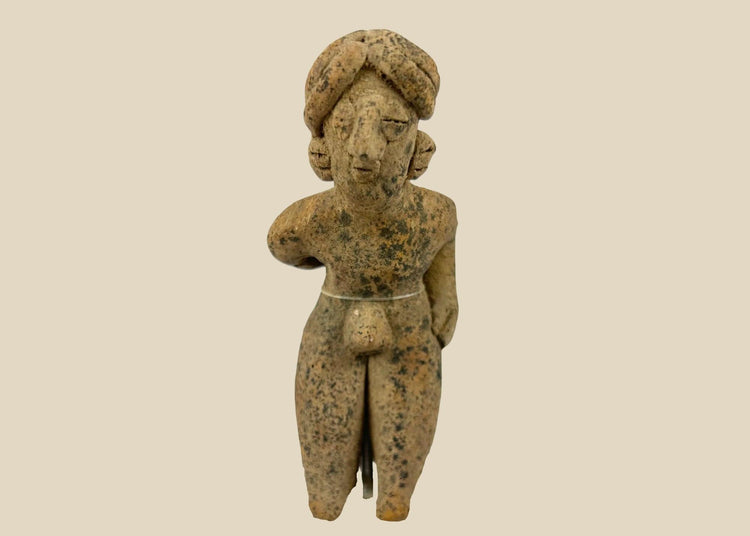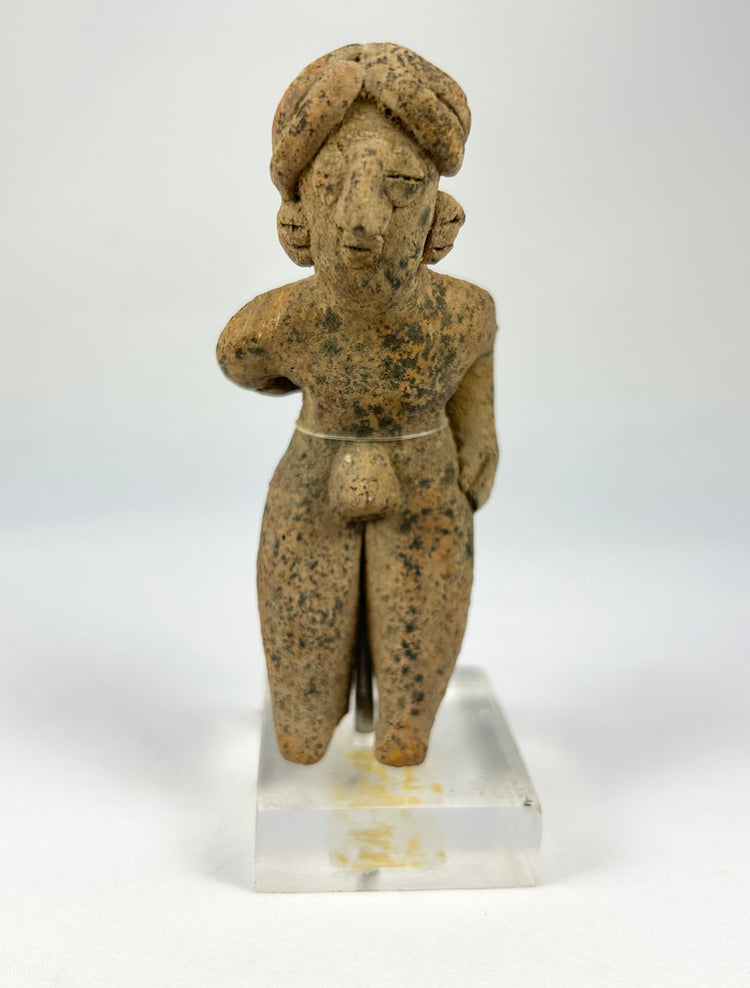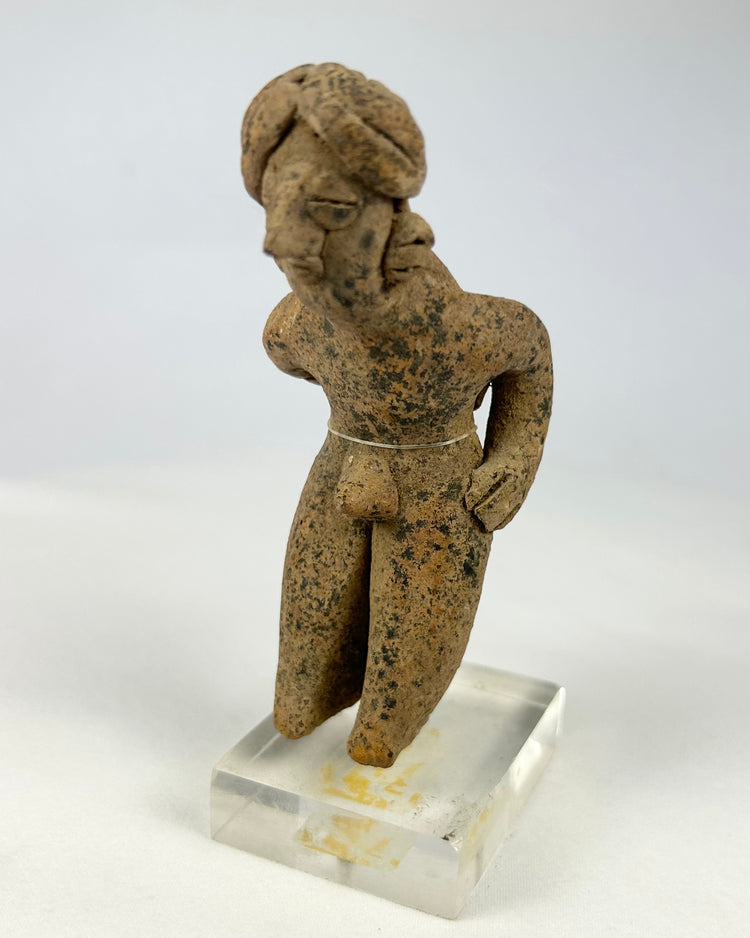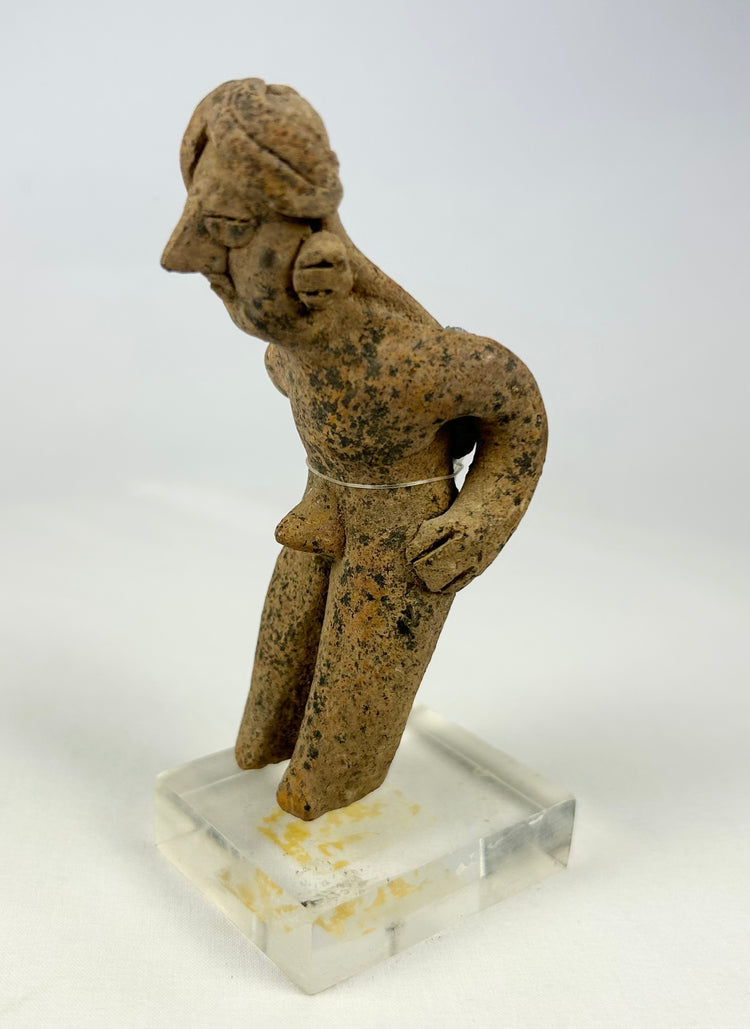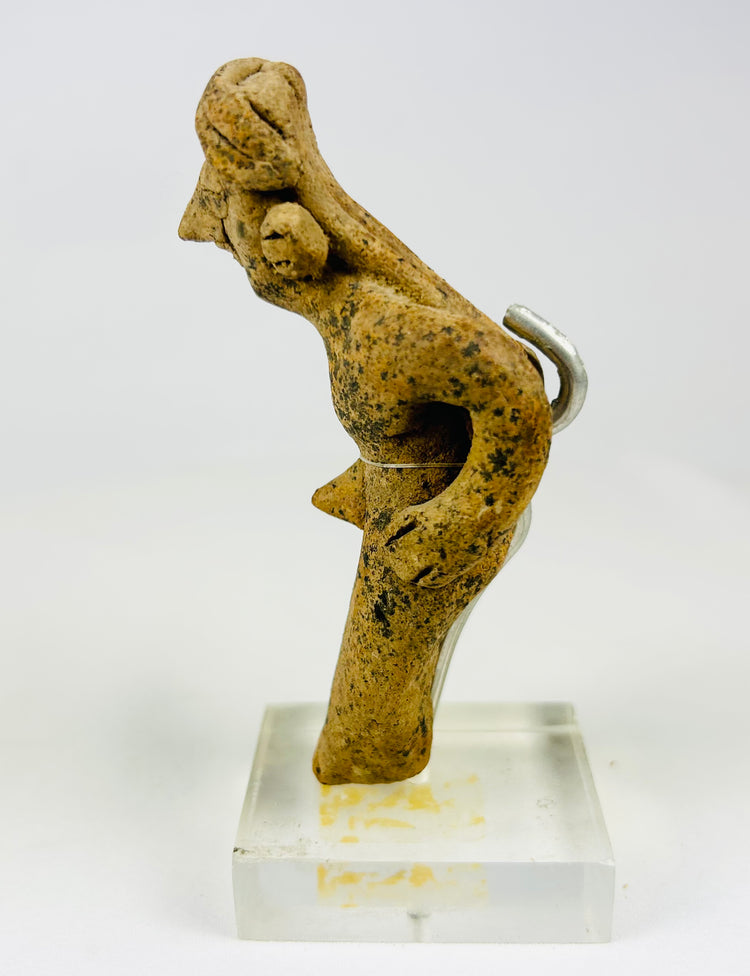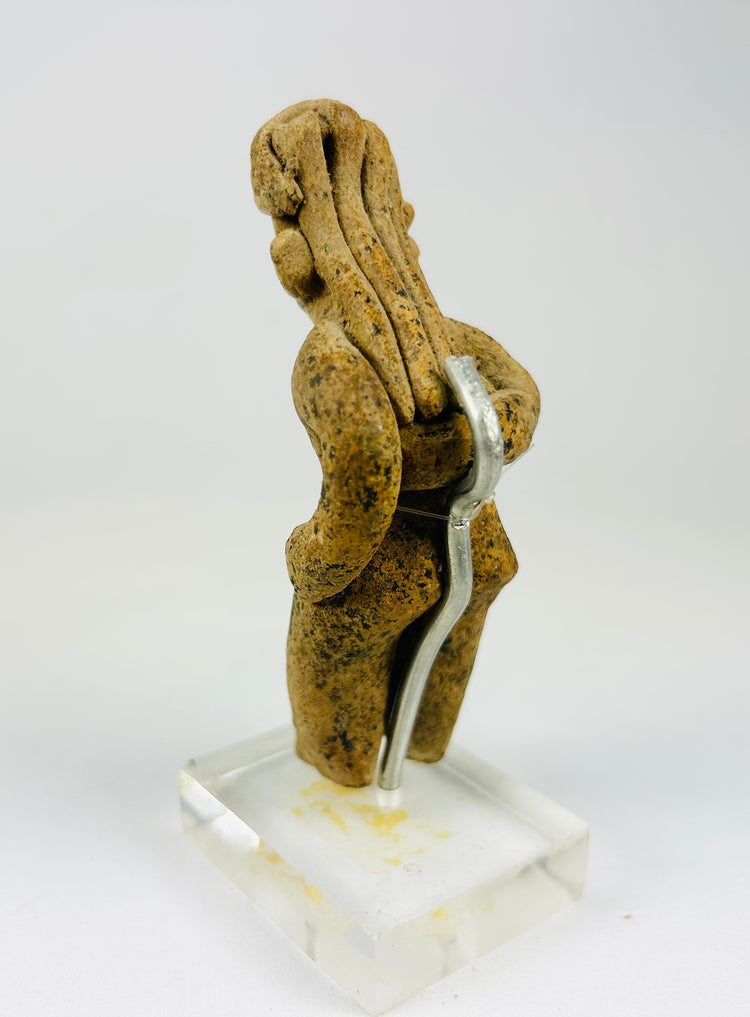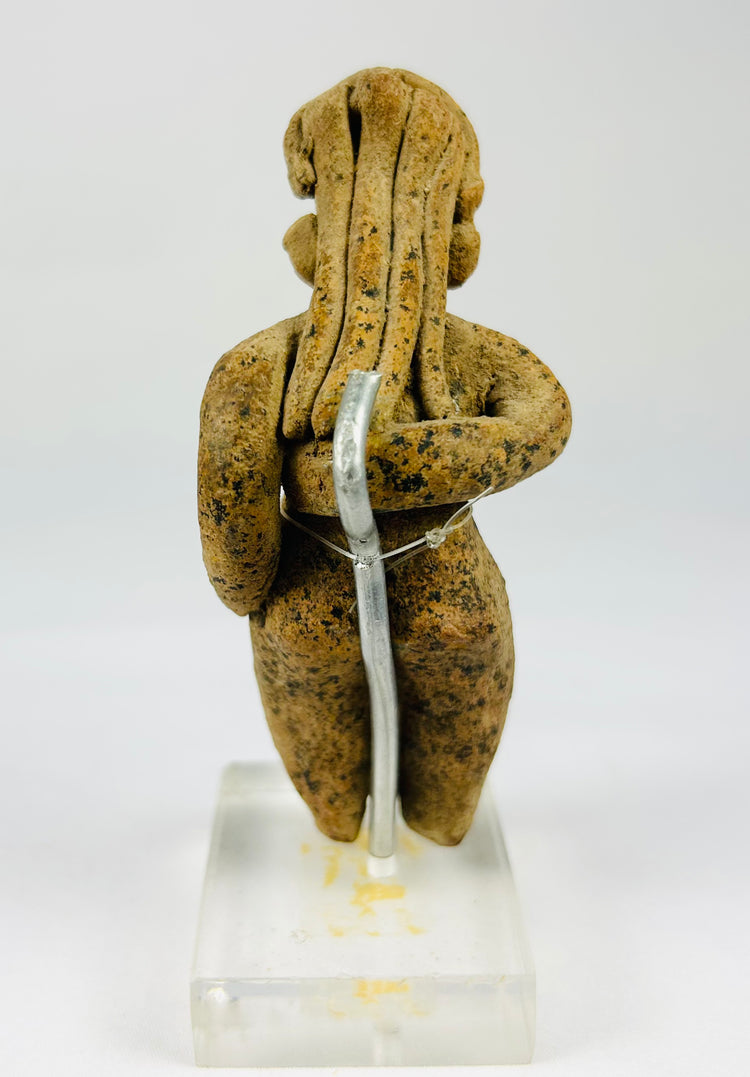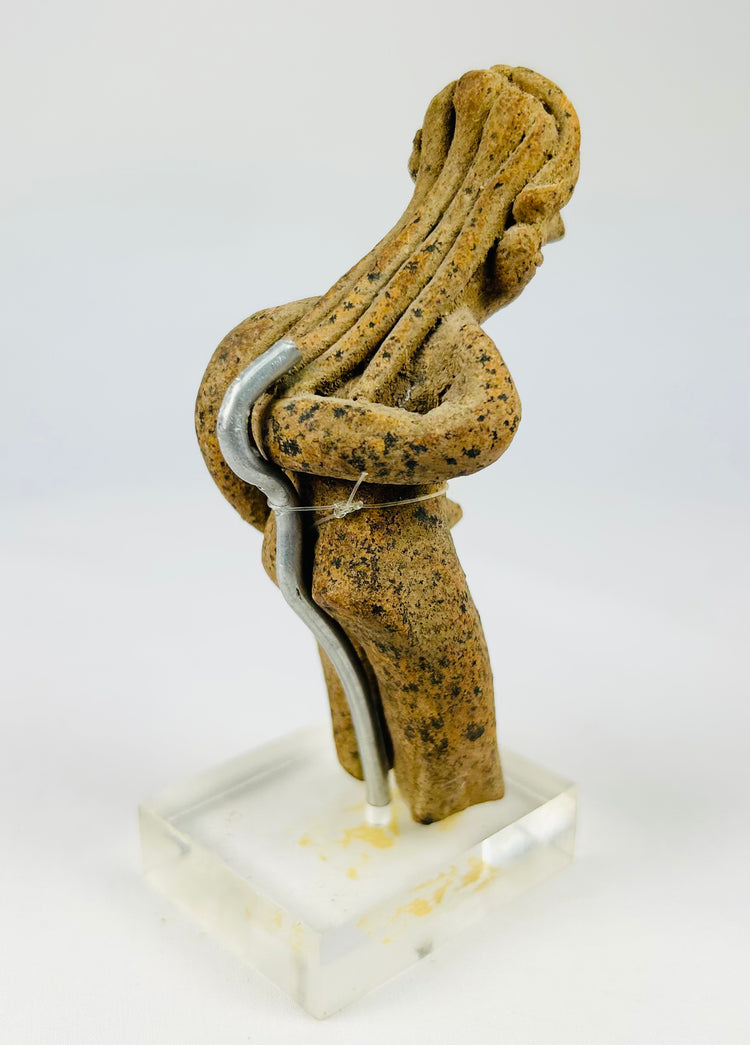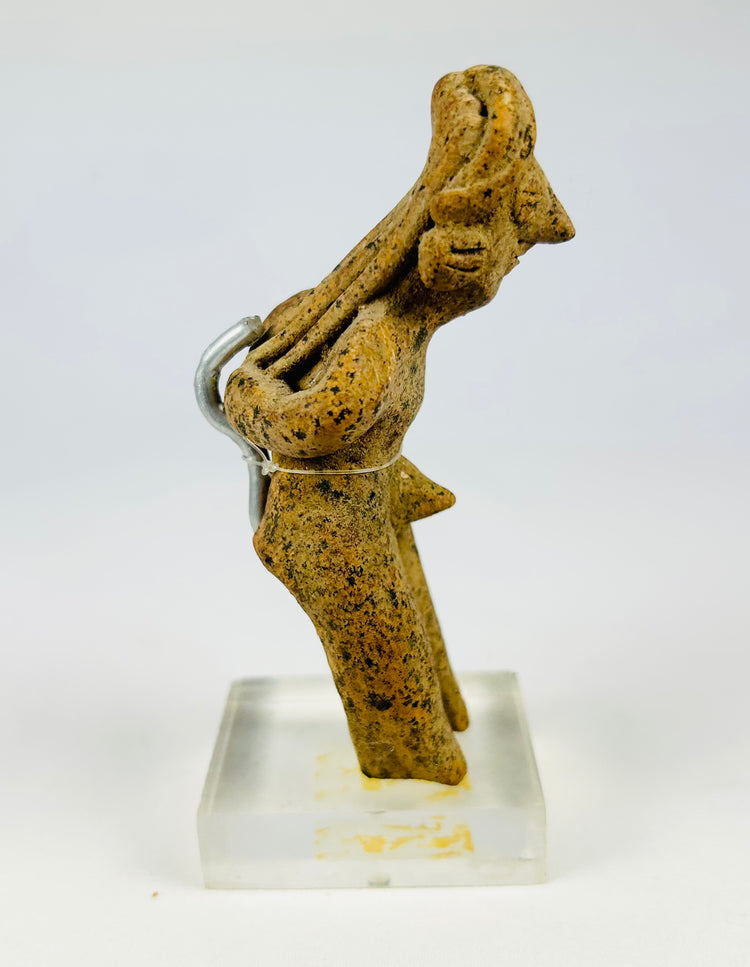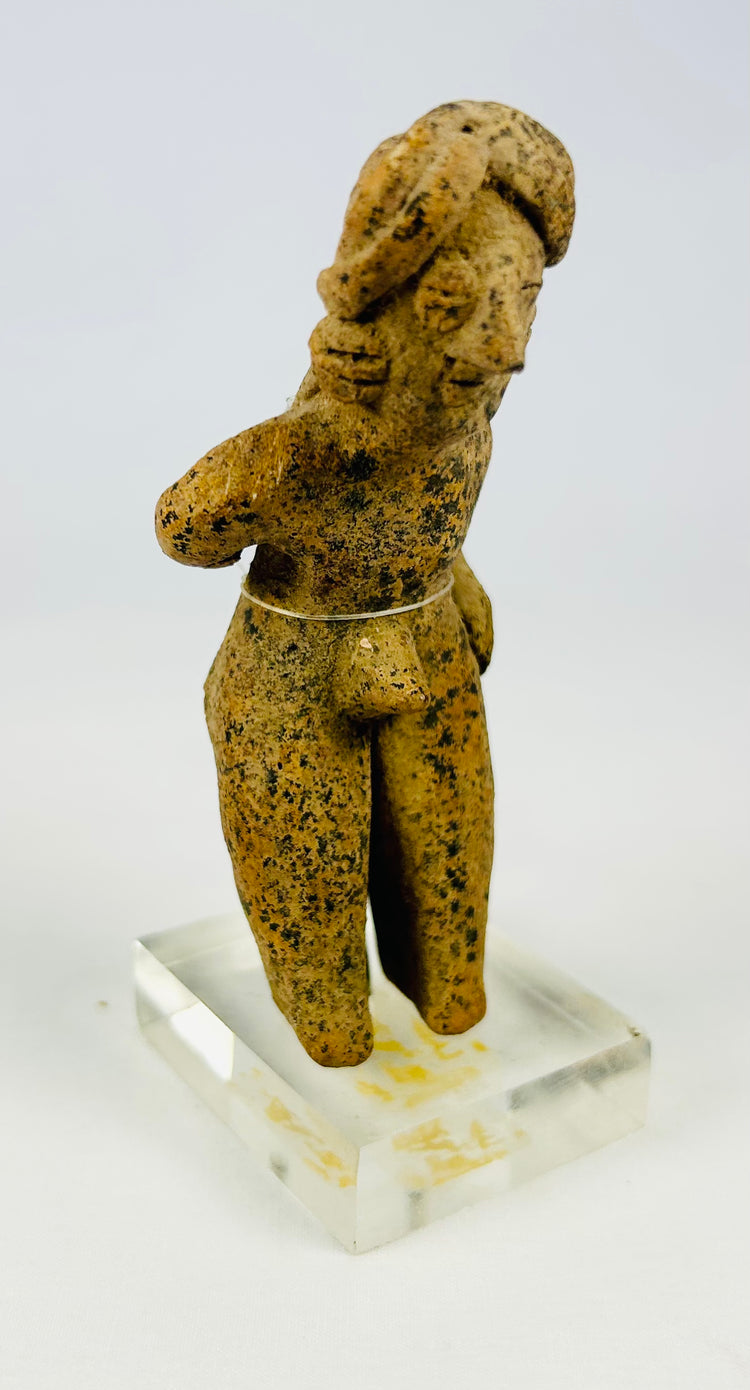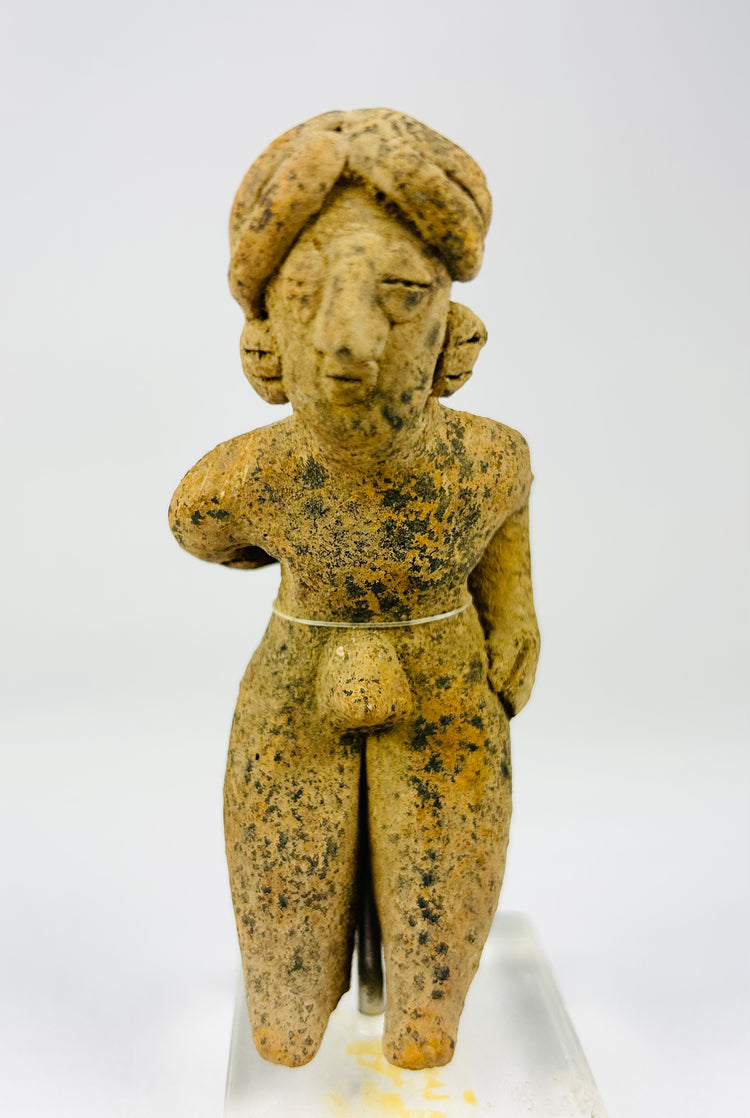Pre-Columbian Terracotta Standing Figure | West Mexico | 300 BCE–500 CE
Description
More
Less
Historical Context & Origin
Region: West Mexico (Nayarit, Jalisco, or Colima)
Material: Hand-modeled terracotta
Period: Pre-Columbian, circa 300 BCE – 500 CE
Description
This finely hand-modeled terracotta figure, created over 1,500 years ago, represents the expressive artistry of West Mexican shaft-tomb cultures. The figure stands upright with arms bent across the chest and wears a tall turban-style headdress, a distinctive feature associated with ritual or ceremonial identity. Despite its antiquity, the piece preserves much of its original form and detail, with surface weathering and encrustations consistent with long-term burial. Mounted on a modern acrylic base, it displays beautifully from multiple angles, emphasizing the stylized proportions and cultural symbolism of ancient West Mexican art.
Features
- Standing terracotta figure with arms bent across chest
- Distinctive turban-style headdress
- Stylized proportions typical of shaft-tomb culture sculpture
- Burial encrustations and surface weathering from antiquity
- Mounted on a modern acrylic base for secure display
Cultural Significance
Figures of this type were integral to the funerary practices of West Mexico, placed in shaft tombs as guardians, companions, or symbolic representations of fertility and prosperity. They reflect the spiritual worldview of Pre-Columbian society, where art served both ritual and protective roles. Today, these figures are highly regarded as cultural artifacts, offering a rare glimpse into the beliefs, social practices, and aesthetic traditions of early Mesoamerican civilizations.
Condition
Good archaeological condition with fragmentary losses, surface wear, and mineral deposits consistent with ancient burial. Stable overall and securely mounted for exhibition.
Dimensions (approximate)
Height: 4.25 in
Width: 1.5 in
Depth: 2 in
Age
Circa 300 BCE – 500 CE
Description
Historical Context & Origin
Region: West Mexico (Nayarit, Jalisco, or Colima)
Material: Hand-modeled terracotta
Period: Pre-Columbian, circa 300 BCE – 500 CE
Description
This finely hand-modeled terracotta figure, created over 1,500 years ago, represents the expressive artistry of West Mexican shaft-tomb cultures. The figure stands upright with arms bent across the chest and wears a tall turban-style headdress, a distinctive feature associated with ritual or ceremonial identity. Despite its antiquity, the piece preserves much of its original form and detail, with surface weathering and encrustations consistent with long-term burial. Mounted on a modern acrylic base, it displays beautifully from multiple angles, emphasizing the stylized proportions and cultural symbolism of ancient West Mexican art.
Features
- Standing terracotta figure with arms bent across chest
- Distinctive turban-style headdress
- Stylized proportions typical of shaft-tomb culture sculpture
- Burial encrustations and surface weathering from antiquity
- Mounted on a modern acrylic base for secure display
Cultural Significance
Figures of this type were integral to the funerary practices of West Mexico, placed in shaft tombs as guardians, companions, or symbolic representations of fertility and prosperity. They reflect the spiritual worldview of Pre-Columbian society, where art served both ritual and protective roles. Today, these figures are highly regarded as cultural artifacts, offering a rare glimpse into the beliefs, social practices, and aesthetic traditions of early Mesoamerican civilizations.
Condition
Good archaeological condition with fragmentary losses, surface wear, and mineral deposits consistent with ancient burial. Stable overall and securely mounted for exhibition.
Dimensions (approximate)
Height: 4.25 in
Width: 1.5 in
Depth: 2 in
Age
Circa 300 BCE – 500 CE
You May Also Like




























